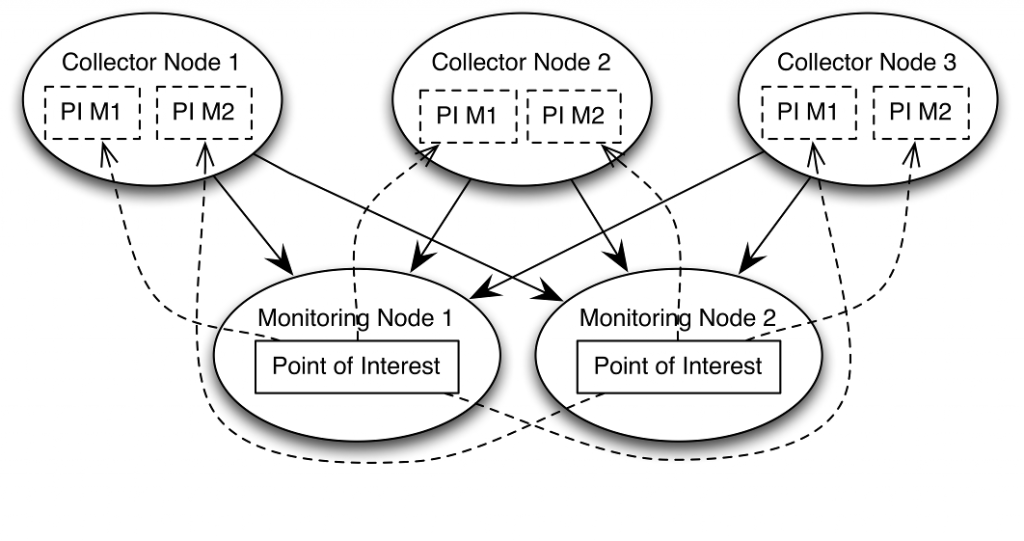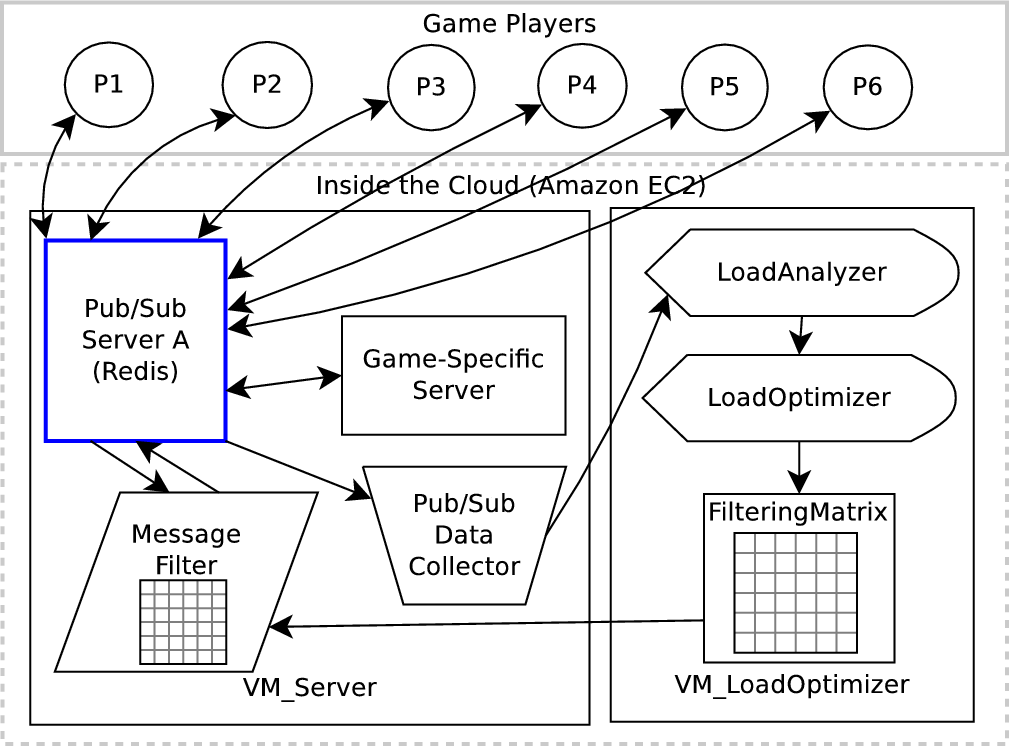Joint work with Dr. Bettina Kemme and Dr. Jörg Kienzle (McGill University)
Monitoring Large-Scale Virtual Environments
Monitoring large-scale virtual environments with hundreds / thousands of nodes (participants) brings many interesting challenges. As this is often the case in large-scale distributed systems, the data collection process itself should not introduce bottlenecks in the system. Also, it might not make sense for interested viewers to observe each individual node in the system. Viewers might want to view collected information at different hierarchical levels; thus, aggregation might be needed.

We designed a monitoring framework tailored for large-scale virtual environments and games [1]. Our framework can collect data about all observable nodes (participants), and perform aggregation depending on the level of details that the viewer wishes to observe.
Experiments were run in the context of a large-scale massive multiplayer online game, with up to 1000 players. Our monitoring framework was used to follow player positions in real time at different zoom levels. Results showed that our framework was properly able to monitor moving players with minimal overhead.
[1] Khan, H., Gascon-Samson, J., Kienzle, J., Kemme, B. (2015) Monitoring Large-Scale Location-Based Information Systems, International Conference on Parallel and Distributed Processing Symposium (IPDPS 2015), Hyderabad, India
Managing Bandwidth in Large-Scale Games
Large-scale online games and virtual environments feature highly variable bandwidth needs, due to many factors (popular in-game events attracting more players, concentrated regions of high interest) [1].
In some contexts, restricting the delivery of messages in order to reduce bandwidth might be an acceptable tradeoff as long as experienced quality is maintained. For instance, in the context of games, it might be acceptable to reduce the frequency of state update messages for players located far apart in a given player’s vision range.

As part of the DynFilter project [2], we developed a specialized publish/subscribed-based middleware and an algorithm to automatically reduce the frequency of publication messages that are received by any in-game player, whenever required, with a very minimal impact on experienced gameplay quality.
The algorithm limits overall bandwidth usage to a predefined quota, over a given period. Filtering levels are done on a per-region basis and are done only for remotely-located players and are continuously updated in real-time based on observed load in order to ensure that quotas are respected.
Results showed that DynFilter was able to attain significant bandwidth savings (35%-45%) with minimal impact on gameplay quality, which could lead to significant costs savings.
[1] Tarng, P.Y., Chen, K.T., Huang, P.: An analysis of wow players’ game hours. In: NetGames 2008. pp. 47–52 (2008)
[2] Gascon-Samson, J., Kienzle, J., Kemme, B. (2015) DynFilter: Limiting Bandwidth of Online Games using Adaptive Pub/Sub Message Filtering, Annual Workshop on Network and Systems Support for Games (NetGames 2015), Zagreb, Croatia